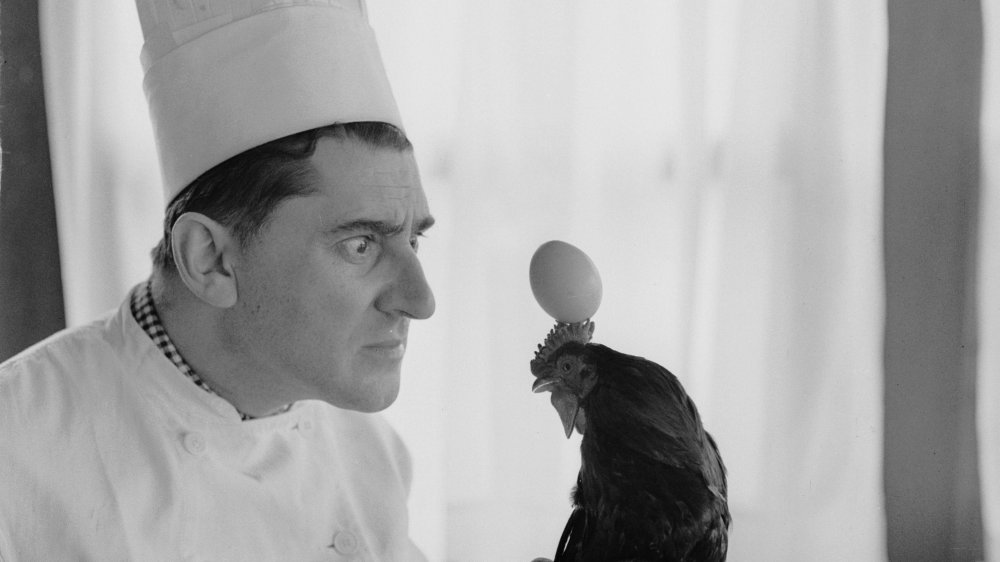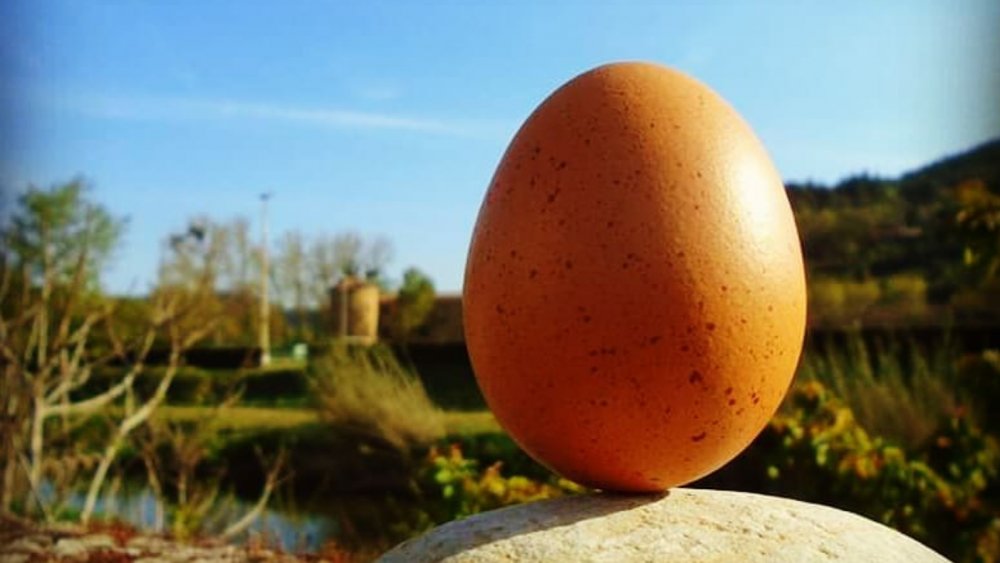The Old Egg Myth That's Been Debunked
On the morning of the spring equinox 1989, at 10:29 am, crowds were set to gather outside of the World Trade Center in Manhattan, The New York Times reports. About a week earlier, a cloud of electrically charged solar plasma collided with the earth's magnetic field and unleashed a geomagnetic storm (via EDN). Amid Cold War tensions, some speculated that the unusual natural phenomenon (which caused around 6 million people to lose power in Canada) was, in fact, a nuclear strike. By March 19, nuclear fears eased, and the crowds planning to gather outside the World Trade Center were preoccupied with another natural phenomenon. They were intent on proving or disproving the idea that on the spring equinox, and solely on a spring equinox, it was possible to balance an egg in a perfectly upright position.
Snopes traces the tradition back to the ancient Chinese. They apparently balanced eggs (a fertility symbol) during the spring equinox (a symbol of restored balance) to prove that "all nature was in harmony." Scholastic offers a plausible, scientific explanation for the myth of the mysteriously balanced, upright, equinox egg. Some believe that during the spring equinox (when the sun and the moon are equally distant from the Earth), gravity's pull is "equalized," making it possible to balance the otherwise unbalanceable. Both theories are enchanting. Alas...
Can you really balance an egg in an upright position during an equinox?
Sure. It's perfectly possible to balance an egg in an upright position during the spring equinox. It's also possible to do so during the fall equinox, on Thanksgiving Day, on the Fourth of July, or on your birthday (if the art egg balancing suits your fancy). The mechanics of doing so has nothing to do with the earth's pull or whether or not "all of nature is in harmony." It has everything to do with the symmetry of an egg.
In 1987 the Associated Press interviewed astronomer Frank D. Ghigo to get to the heart of the myth. Gihgo said that whether or not an egg is balanceable in an upright position is "a function of the shape of the egg and the surface." Still skeptical? Ghigo ran an experiment to prove it. Every day between February 27 and April 3, 1984, he attempted to balance eggs on a table. Sometimes he was successful, sometimes he was not. ″The mood and persistence of the balancer [have] a major effect on the balancing rate," explained Ghigo. "If one is impatient or nervous, the rate is low.″ Scholastic, on the other hand, suggests that the key is "finding an egg with a yolk centered in the shell." Need a translation? Asymmetrical shapes and shapes that are heavier in certain parts than they are in others are harder to balance.

